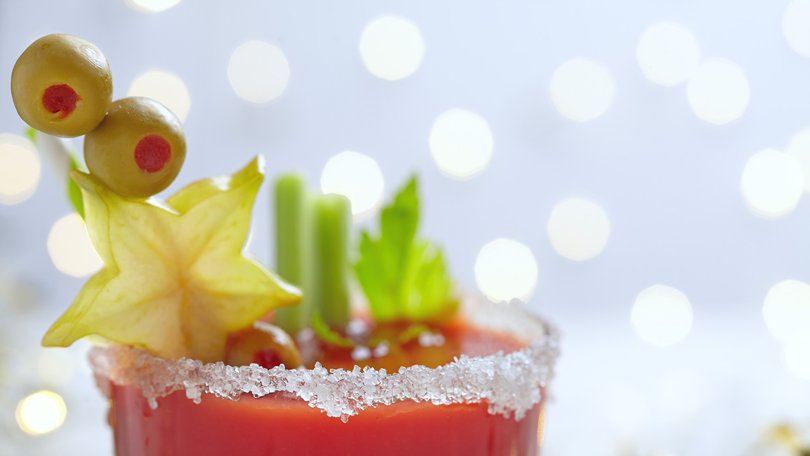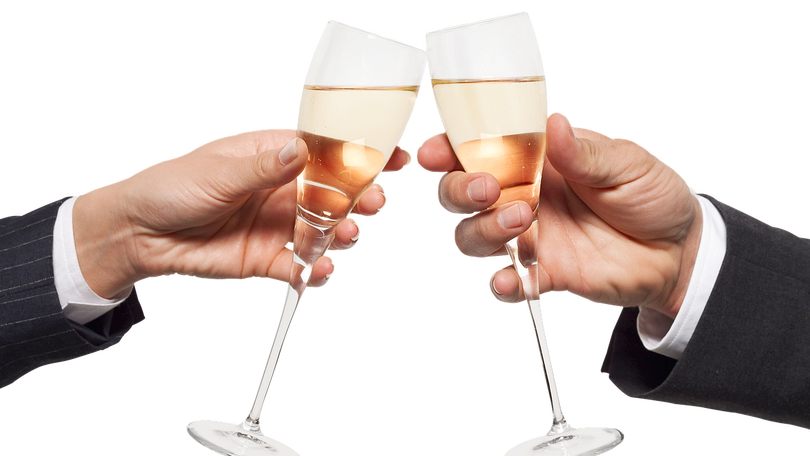Nutritionist Sarah Di Lorenzo on the smarter, lower-calorie drink swaps to make as holiday drinking ramps up

Australians consistently drink more over the festive period, and research shows alcohol intake in December is about 70 per cent higher than the yearly average.
The increase comes not just from the frequency of social events and family gatherings, but from a more relaxed mindset at the end of the year — people are consuming larger quantities of alcohol at each occasion.
From around October, Australians’ frequency of alcohol drinking occasions rises from an average of seven times to eight times. December brings about a 10 per cent increase in the number of drinks consumed on each occasion.
Sign up to The Nightly's newsletters.
Get the first look at the digital newspaper, curated daily stories and breaking headlines delivered to your inbox.
By continuing you agree to our Terms and Privacy Policy.Beer sales tend to surge in spring, while spirits consumption jumps during Christmas and New Year, highlighting a strong link between festive events and increased alcohol intake.
Many people report drinking to excess in this period for reasons including social pressure, just feeling more relaxed at the end of the year, or even to cope with holiday stress or loneliness.
This is also a time when people tend to derail from their health goals. But we do have options and can focus on being mindful. Making healthy choices with alcoholic drinks can help you enjoy celebrations.
When it comes to alcoholic drinks*, the best choice at the top of my list is champagne because it is lower in sugar and people generally consume it in smaller amounts than many other drinks. Sparkling wines have fewer carbohydrates and calories than semi-sweet or sweet varieties. Calories are around 77 per drink.
Red wine is known for having some health benefits. It has a higher content of polyphenols, including resveratrol and quercetin, which contribute to heart health, support gut bacteria, and deliver antioxidant benefits. For these health benefits, you need to keep the intake to no more than two; beyond that risk outweighs the advantages. Calories per glass sit around 150.
A wine spritzer, which is white wine mixed with soda water, is also a good choice. It decreases the alcohol and sugar content per glass and can still taste OK with the calories around 90 per glass. Dry white wines are also lower in carbohydrates and sugar.
When it comes to spirits, clear spirits like vodka, gin, or tequila, paired with soda or mineral water and fresh lime, are low-calorie options free of something of excellent benefit if the hangover is not as bad as compared to wine because of the congeners.
I really like the idea of adding botanicals, herbs or kombucha to your spirits for flavour and health benefits. Plus a Bloody Mary is an excellent choice as it is a mix of tomato juice and spices, supplying potassium, lycopene, and vitamin C, with lower sugar than most mixed drinks.
On my worst drinks list, the top would be cocktails such as Margaritas, Daiquiris, and Piña Coladas. These are usually packed with added sugar, syrups, and liqueurs, leading to high-calorie content and rapid blood glucose spikes.
They can also worsen hangover severity due to high refined sugar and artificial colours. Plus, calories can range from 200 to 740 per glass.
Next would have to be the creamy and syrupy drinks like Baileys. These alcoholic creamy drinks and liqueurs are high in saturated fat, sugar, and calories, and can elevate cholesterol as weight gain.

The mixed drinks with soft drinks, juice and tonic are high on my list as well. A gin and tonic is around 200 calories, while a gin and sparkling water is around 80 calories. Other mixed drinks to avoid include vodka and orange juice, and rum with Coca-Cola.
For beer drinkers, craft and flavoured beers generally contain more alcohol, sugar, and calories than standard lagers or light beers.
As well, something else worth raising awareness of is shots, especially those with energy drinks. These drinks are high in alcohol, caffeine, and sugar all at once, increasing risk for metabolic disruption and accidents.
When it comes to surviving the festive season and sticking to your health goals, some practical tips are to avoid cocktails and mixer drinks.
Stick with champagne or a spirit with mineral or soda water. Wine is also a good option, but be aware that the hangover can be worse. Always stay hydrated.
If you want to maintain or avoid weight gain, support metabolic health or even just be a little more festive, being mindful is key.
It is important to note that there is no completely safe level of alcohol consumption.
* As a clinical Nutritionist and author of The Liver Repair Plan, I struggle with recommending any alcohol at all, however, I have learned in my practice that alcohol is a part of people’s social lives, and most are not willing to abstain completely. I do my best to give people the most realistic advice I can. I suggest not going over the Australian Alcohol Guidelines, which is no more than 4 standard drinks a day and no more than 10 standard drinks a week. Children and pregnant or breastfeeding women should not drink at all.

